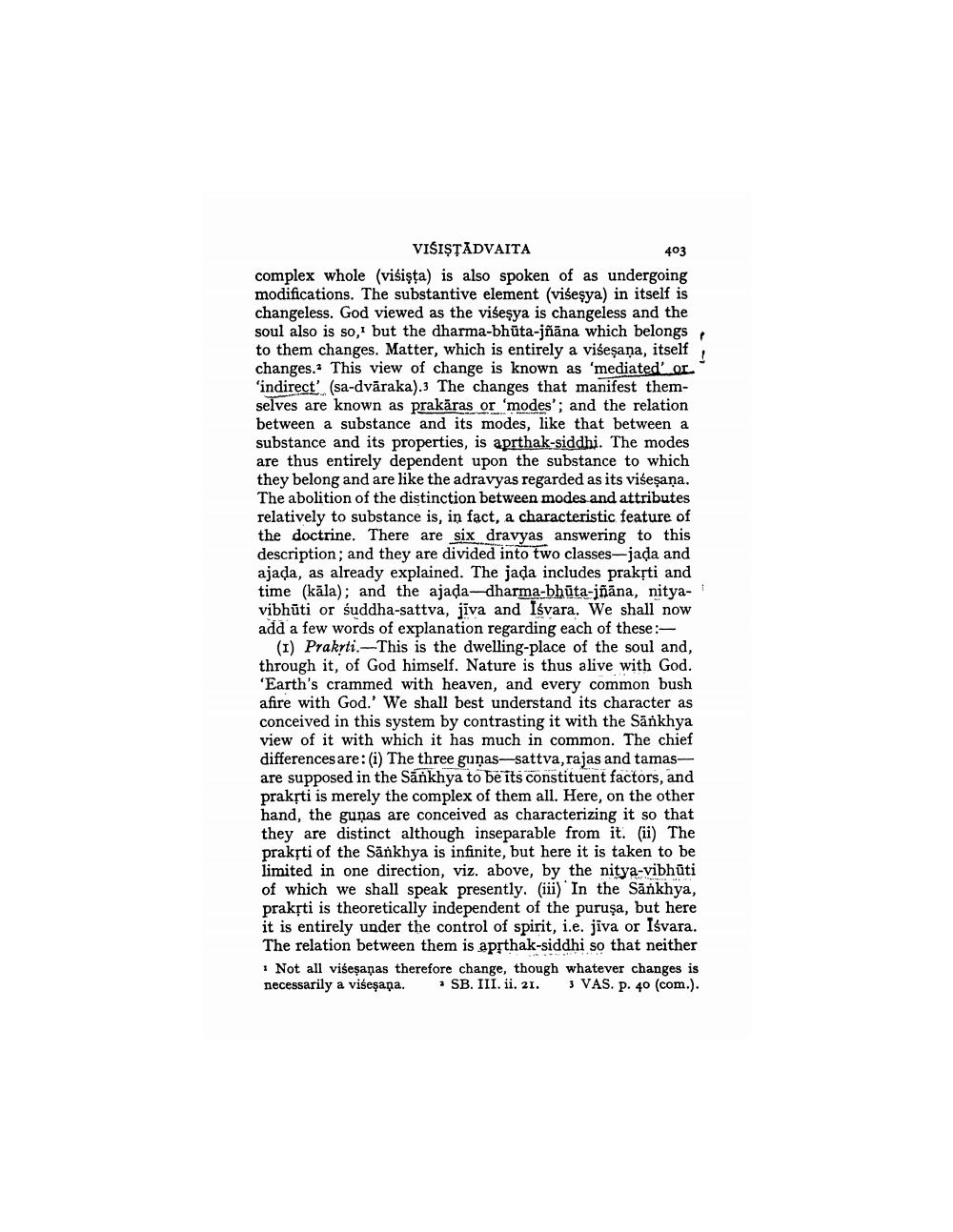________________
VISISTADVAITA
complex whole (visista) is also spoken of as undergoing modifications. The substantive element (viśeşya) in itself is changeless. God viewed as the viśeşya is changeless and the soul also is so, but the dharma-bhūta-jñāna which belongs to them changes. Matter, which is entirely a viseṣaṇa, itself changes. This view of change is known as 'mediated' or 'indirect (sa-dvāraka).3 The changes that manifest themselves are known as prakāras or 'modes'; and the relation between a substance and its modes, like that between a substance and its properties, is aprthak-siddhi. The modes are thus entirely dependent upon the substance to which they belong and are like the adravyas regarded as its viseṣaṇa. The abolition of the distinction between modes and attributes relatively to substance is, in fact, a characteristic feature of the doctrine. There are six dravyas answering to this description; and they are divided into two classes-jada and ajada, as already explained. The jada includes prakṛti and time (kāla); and the ajada-dharma-bhūta-jñāna, nitya- 1 vibhuti or suddha-sattva, jiva and Iśvara. We shall now add a few words of explanation regarding each of these:
(1) Prakyti. This is the dwelling-place of the soul and, through it, of God himself. Nature is thus alive with God. 'Earth's crammed with heaven, and every common bush afire with God.' We shall best understand its character as conceived in this system by contrasting it with the Sankhya view of it with which it has much in common. The chief differences are: (i) The three gunas-sattva, rajas and tamasare supposed in the Sankhya to be its constituent factors, and prakṛti is merely the complex of them all. Here, on the other hand, the gunas are conceived as characterizing it so that they are distinct although inseparable from it. (ii) The prakṛti of the Sankhya is infinite, but here it is taken to be limited in one direction, viz. above, by the nitya-vibhuti of which we shall speak presently. (iii) In the Sankhya, prakṛti is theoretically independent of the puruşa, but here it is entirely under the control of spirit, i.e. jiva or Isvara. The relation between them is apṛthak-siddhi so that neither
403
Not all viseṣaṇas therefore change, though whatever changes is necessarily a viśeşana. SB. III. ii. 21. 3 VAS. p. 40 (com.).




